Price reductions at Crocus
by Sarah - June 17th, 2009.Filed under: Crocus, Price Reductions.
Reduced price on products today at Crocus
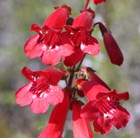
beard tongue was £5.99 now £4.99
Position: full sun or partial shadeSoil: fertile, well-drained soilRate of growth: average Flowering period: July to OctoberHardiness: fully hardy (borderline)Elegant spikes of small, tubular, foxglove-like flowers appear from July to October among lance-shaped, bright green leaves. This easy-to-grow perennial will quickly form large, leafy clumps and is perfect for adding a splash of colour to the middle of a sunny, well-drained border. If you deadhead regularly, the flowers will persist until the first frosts. This variety is particularly free flowering, and produces lilac flowers with a metallic sheen, often flushed with red. Each one has a white throat, striped with burgundy.Garden care: Remove the faded blooms regularly to prolong flowering. Apply a dry mulch around the base of the plant to protect the roots from frost damage and cut back in spring when new shoots appear low down on the stem. Lift and divide congested clumps in spring.
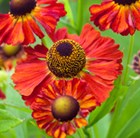
sneezeweed was £5.99 now £4.99
Position: full sunSoil: fertile, moist but well-drained soilRate of growth: average Flowering period: June to AugustHardiness: fully hardyA succession of dark copper-red daisy-like flowers up to 8cm (3in) across with prominent, dark brown centres from June to August. This beautiful sneezeweed is ideal towards the back of a sunny, moist but well-drained border. It makes a wonderful companion for ornamental grasses and yellow, white or earth-toned flowers. Bees and butterflies love it and it makes an excellent cut flower too. It is a super plant which has been awarded the prestigeous Award of Garden merit by the Royal Horticultural Society.Garden care: Heleniums are versatile plants that love plenty of sunsh sunshine and moist soil. They rarely suffer from pests or diseases, however young plants do need to be protected from slug attack. Tall varieties need to be staked. To encourage the plant to repeat flower deadhead back to side shoots that have flower buds emerging. Cut back by half after flowering to help prevent mildew. Cut down to the ground in late winter. Every two or three years divide the plants in spring to keep them in top condition. When replanting add loads of well-rotted organic matter to the soil to feed them and keep them moist.
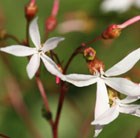
bowmans root was £6.49 now £5.49
Position: partial shadeSoil: fertile, well-drained soil, neutral to slightly acidic soilRate of growth: averageFlowering period: JuneHardiness: fully hardyA charming perennial that bears masses of delicate, star-shaped white flowers in midsummer. In autumn, the pretty, three-leafed foliage turns fiery red and the winter seedheads are a bonus too. Lovely towards the front of a shady, woodland border, where the flowers can be appreciated.Garden care: Divide congested plants in spring or autumn. Protect young shoots from slug attack.
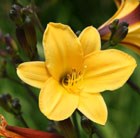
daylily was £6.49 now £5.49
Position: full sunSoil: fertile, moist, well-drained soilRate of growth: fastFlowering period: JuneHardiness: fully hardyMasses of beautiful, golden yellow, lily-like flowers lasting one day, appear continuously in early summer on slender stems. This cheerful, yellow daylily looks great planted at the front of a sunny mixed or herbaceous border among other 'hot' colours. A compact and free flowering variety, it's ideal for the smaller garden or a large container planting. Like most hemerocallis, it is robust and easy to grow, provided you follow the tips below. Garden care: The Greek term 'hemerocallis' means 'beautiful for a day', and daylilies need regular deadheading to prolong flowering and prevent their unsightly deadheads from dominating the scene. Each stem carries several flowers, so snap off each flower as it fades. When the stem has finished flowering, cut it down to the ground. After the plant has finished flowering altogether, pull out the dead leaves. When the foliage is looking tatty, cut it down to the ground and fresh new growth will appear. Lift and divide every two years in spring to keep the rhizomes vigorous and apply a generous 5-7cm (2-3in) mulch of well-rotted garden compost or manure around the base of the plant. Water frequently from spring until the buds appear.
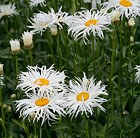
shasta daisy was £6.99 now £5.99
Position: full sun or partial shadeSoil: moderately fertile, moist but well-drained soilRate of growth: average to fastFlowering period: June to SeptemberHardiness: fully hardyA striking variety of the ever-popular Shasta daisy. This robust, clump-forming perennial has glossy, almost fleshy, dark green leaves and bright white flowers arranged round a yolk-coloured central disc borne on top of long green stems. The flowers appear over a long period, usually from early summer to early autumn, and have unusual, ragged petals that look as if they have been shredded. This easy-to-grow daisy looks best planted in bold drifts in a sunny border alongside any yellow Achillea or with ornamental grasses. It also makes a good cut flower. Garden care: Divide congested plants in early spring or late summer. Protect young plants from slugs and snails. Cut down to the ground in autumn.
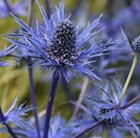
sea holly was £7.99 now £6.99
Position: full sunSoil: moist, well-drained soilRate of growth: average Flowering period: August to October Flower colour: steely blueOther features: superb foliageHardiness: fully hardyThis delightful Sea Holly has long lasting, bright metallic-blue flowers that arrive in mid to late summer and usually last well into the autumn. They have a strong architectural shape, so are best in uncrowded borders where they can really stand out on their own. Honey bees love their flowers so they are a perfect for adding to a sunny, wildlife-friendly garden.Garden care: Lift and divide large colonies in spring. Avoid the temptation to cut back the flowerheads in autumn as they provide interest in the winter garden.






